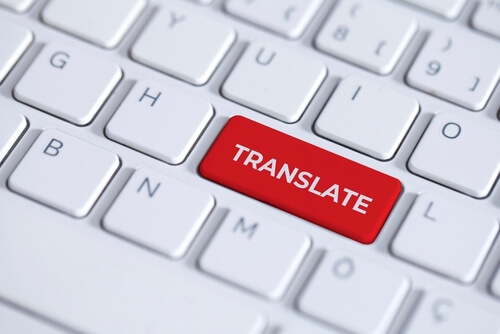What is a CAT Tool and what are its benefits?
For over twenty years, translators have been using software programs to render texts from one language to another.
CAT stands for computer-assisted translation, and it involves the use of translation software in the translation process.
A CAT tool is a software programme that can help you not only translate faster but also improve the quality of the translations. CAT tools can streamline the translation process, save time, ensure consistency and thus provide high-quality results.
Regardless of rapid technological progress, it will take some time before computers can replace humans in the translation process.
Today, the use of CAT tools is the industry standard for individual translators as well as for translation agencies. Just like any good tool, a CAT tool still needs a human quality assessor.
Translation memory tools are designed to help qualified translators, proofreaders, and project managers. They speed up the entire translation process and help eliminate sources of error.
However, CAT tools are not advisable for the inexperienced, as this could easily lead to more harm than good.
What is a machine translation?
CAT tools are not to be confused with machine translation, which is the process of using artificial intelligence to automatically translate texts from one language to another without any human involvement.
When to use CAT tools?
Computer aided translation tools work well with the majority of translation projects and benefit everyone involved in the workflow: clients, project managers, translators and proofreaders.
CAT tools are often used to create and develop terminology databases and conceptual data models relating to a certain project, client, or field.
Such databases, also called translation memories, are not merely series of sentences and phrases that have been translated before, but can be used for translating parallel passages, thus increasing the consistency of all documents relating to a certain company or institution.
In brief, translation tools can save time, effort and money and increase quality assurance.
A translation tool is especially useful when translating legal, scientific, or technical documents, as these documents are often full of repetitive terminology.
When not to use CAT tools?
However, in some cases, a CAT tool cannot be used. If the source text is handwritten, it must first be transferred into an editable version, usually by hand.
Likewise, if the source text is in a non-editable format or requires complex editing, it makes it difficult or even impossible to convert the text into an editable file, even by optical character recognition software.
Nevertheless, modern CAT tools support most of the existing file formats.
How to set prices for computer aided translations?
When a text has been translated with the help of a CAT tool, prices are set based on an analysis of the source text.
The result of such an analysis depends not only on the number of words in the source text but also on whether we can use the existing translation memory or need to create a new one.
Normally, a new translation memory needs to be created only for new clients or projects, although an existing translation memory may also be available at that time.
The file analysis determines the proportion of unique segments and the proportion of repetitions (similar or identical phrases used two or more times throughout the text).
In principle, the analysis process is carried out at the level of sentences, or even of clauses, if the sentences are particularly long. The tool analyses the statistics of each file and displays the number of repetitions the file contains, including perfect (100%) and fuzzy (partial) matches.
What are repetitions in computer assisted translations?
A CAT tool first splits up your text into short segments, consisting either of complete sentences or of sentence fragments, and further on recognises identical and very similar segments. A translation unit that is repeated within a new source document is called a repetition.
The more repetitions the text contains, the less translation work is needed, because once a fragment has been translated, it is no longer necessary to translate all its repetitions. During the translation, the CAT tool simultaneously checks each sentence and automatically suggests the appropriate translation. The translator can either accept, edit, or reject it.
Documents that make the best use of translation tools are those with the highest number of repetitions, such as user manuals, descriptions of procedures, agreements, and financial statements.
It is essential to understand that repetitions are not only similar clauses appearing in a certain text but also many sentences that only differ minimally. In all such cases, the CAT tool suggests appropriate translations, requiring only a few changes, which is much faster than translating everything from scratch.
With each newly translated document, the translation memory continues to expand, thus enhancing its future translating efficiency. The translated segments are approved not only by translators but also by proofreaders and other people involved in the translation process. It also makes it easier for the client to request changes.
Whether matches are perfect or fuzzy, CAT tools contribute to reducing the scope of work and the expenditure, and to increasing the consistency.
What kinds of texts are best translated with CAT tools?
The most suitable texts to be used with CAT tools are standard texts in the fields of law, business and finance (annual reports and financial statements), and technical texts (all kinds of reports, manuals and specifications).
As far as text types are concerned, there are no real restrictions, therefore any translation tool remains a cost-effective choice, especially when a client needs translations of a large number of similar documents over a longer period of time.
Computer-assisted translation is a solution that is suitable for every industry. Experienced users can even use CAT tools to translate and localise websites, as these tools successfully support file formats such as “xml” and “html”.
DROP US A LINE.
WILL GLADLY HELP YOU!



